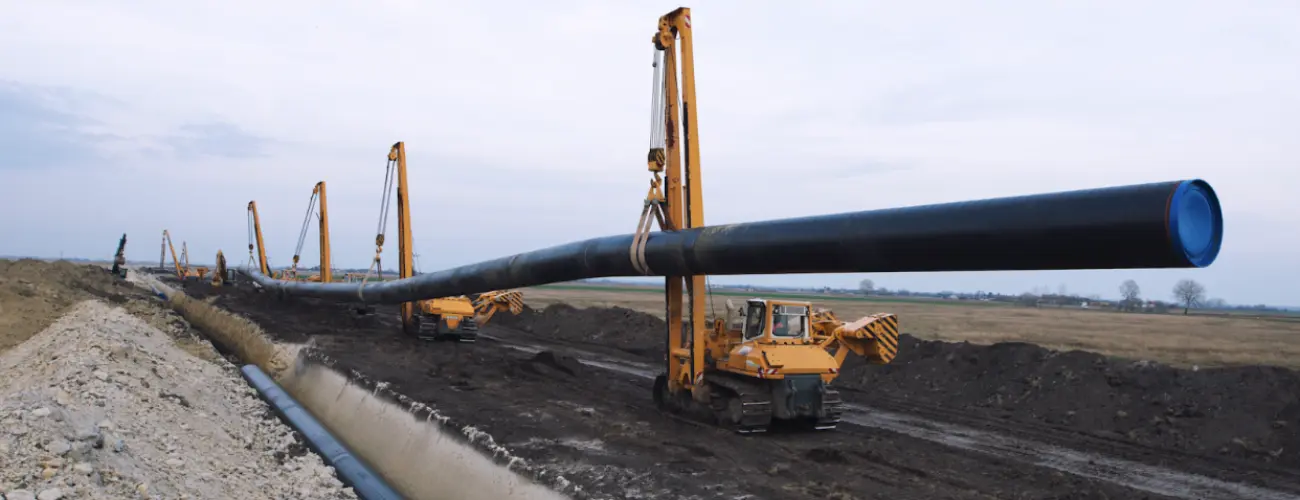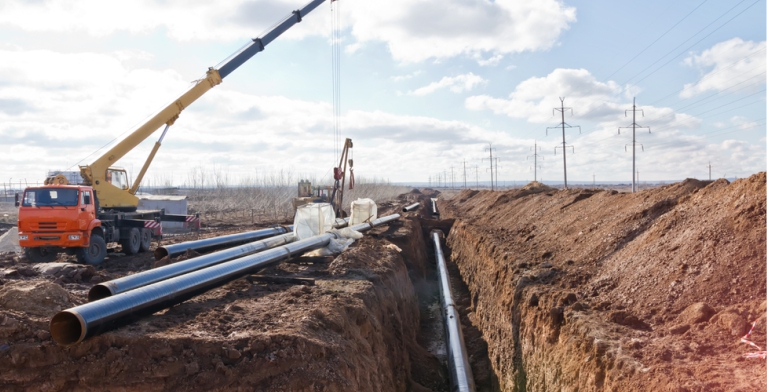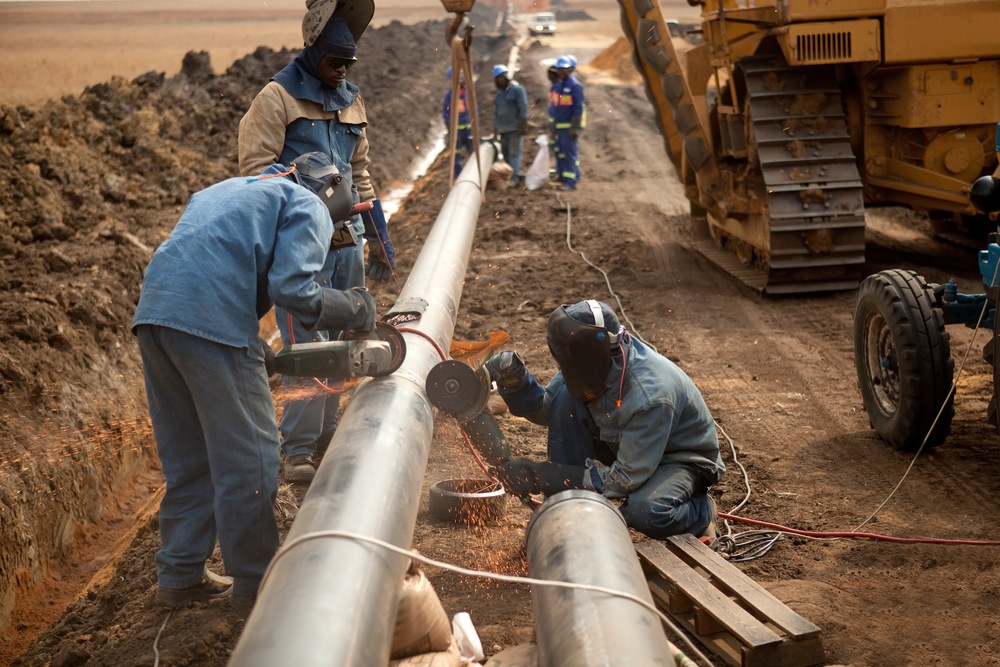Best Practices for Safer Pipe Joining by Creek Pipe roustabout Crews
Wiki Article
Comprehending the Essentials of Pipes Installation: What You Required to Find Out About the Process
Proper pipe installation is important for any kind of plumbing system. It requires mindful consideration of numerous aspects, including product choice and adherence to regional policies. A tactical design can avoid problems like stress loss, while the right tools ensure reliable signing up with techniques. Even experienced installers can make usual errors. Comprehending these essentials can bring about a much more effective and sturdy system, prompting a better look at the crucial elements included in the process.Choosing the Right Materials for Pipe Installation
When considering pipe installation, the selection of suitable materials is necessary to making sure resilience and performance. Numerous products are offered, each offering unique advantages and considerations. For instance, PVC pipes are light-weight, resistant to rust, and affordable, making them ideal for residential plumbing. Alternatively, copper pipelines, known for their durability and capacity to withstand high temperature levels, are usually favored for heating systems.Additionally, galvanized steel pipes offer stamina and durability, ideal for sturdy applications, although they are vulnerable to rust over time.For below ground setups, polyethylene pipelines are preferred due to their flexibility and resistance to stress breaking. Proper material selection depends upon the certain requirements of the job, including stress scores, temperature variations, and the chemical nature of the fluids being delivered - Creek Pipe reviews. Ultimately, educated options regarding pipe materials add considerably to the general success and durability of plumbing systemsUnderstanding Local Building Regulations and Regulations
How can comprehending local building codes and policies effect pipe installation? Experience with these codes is important for making certain that pipe installations are safe, certified, and reliable. Local building ordinance lay out certain needs regarding products, installation methods, and precaution, which have to be adhered to to avoid potential lawful concerns and expensive fines.Failure to abide can lead to assessments being stopped working, hold-ups in job conclusion, and even mandated removal of incorrectly mounted pipelines. In enhancement, comprehending zoning legislations and policies can influence the sort of materials permitted, along with the methods utilized for installation.Contractors and homeowners alike must invest time in assessing neighborhood guidelines before commencing any kind of installation task. This aggressive strategy not only advertises safety and security yet likewise improves the general high quality and toughness of the plumbing system, ultimately fostering long-term performance and complete satisfaction.Planning Your Pipe Design and Style
Proper planning of pipe format and layout is crucial for attaining a reliable plumbing system. This procedure starts with evaluating the particular demands of the space, taking into consideration the area of fixtures and devices. Precise dimensions guarantee that pipelines are properly directed, lessening bends and turns that can cause push loss.Consideration of the flow prices and the types of products utilized is vital, as different products have differing toughness and compatibility with plumbing systems. In addition, the designer should represent future expansions or alterations to the design, enabling for adaptability in case of renovations.Efficient water drainage and ventilation are additionally significant components of the style, as they avoid obstructions and assure correct waste elimination. Partnership with regional building codes guarantees conformity and safety and security, which is critical in any kind of plumbing installation job.Necessary Devices and Equipment for Installation
Effective pipe installation depends upon having the right devices and tools handy. Necessary devices include pipe cutters for tidy cuts, wrenches for tightening installations, and pliers for gripping and transforming pipes. Additionally, a degree guarantees pipes are mounted equally, while a gauging tape aids in achieving precise lengths.For details products, a soldering iron might be needed for copper pipes, while a PVC cutter is vital for plastic options. Security equipment, such as handwear covers and goggles, secures installers from prospective threats during the process.A pipeline bender can be especially beneficial for developing smooth curves without compromising integrity, while a torque wrench assurances that links are secured to the producer's specifications.Having these devices easily available not just assists in a smoother installation procedure yet also adds to the total longevity and capability of the pipes system. Appropriate equipment is critical in attaining resilient results.Strategies for Proper Pipe Signing Up With and Securing
Accomplishing a safe and secure and leak-free connection in between pipes requires mindful attention to joining and securing methods. Different approaches exist, each matched to various pipe products and applications (Creek Pipe Texas oilfield). Welding is often used for metal pipelines, making certain durable connections with warm fusion. In comparison, plastic pipes take advantage of solvent concrete or blend welding, creating solid, irreversible bonds.Threaded connections prevail in both metal and plastic piping, calling for accurate positioning and making use of proper sealers, such as Teflon tape or pipe dope, to stop leakages. Compression fittings supply another alternative, where mechanical pressure safeguards the pipes together, Creek Pipe HDPE installation making them easily dismantled for maintenance.Regardless of the technique selected, correct preparation is necessary. This includes cleaning pipe ends and ensuring they are complimentary from particles. Executing these techniques vigilantly will improve the longevity and integrity of the pipe system, ultimately adding to its effective performanceUsual Blunders to Avoid During Installation
During pipe installation, staying clear of common mistakes is vital for making sure a trusted and effective system. One frequent mistake is falling short to measure and reduce pipelines properly, which can cause incorrect fittings and leaks. Furthermore, disregarding to inspect the compatibility of products can lead to corrosion or other damages over time. Incorrectly safeguarding joints and links can also develop powerlessness in the system, causing possible failures.Another common error is overlooking the importance of incline and drain; pipelines have to be mounted at the correct angle to facilitate correct flow. Inadequate support for pipes can bring about drooping and stress, influencing the honesty of the system. Inevitably, overlooking neighborhood codes and laws can cause costly rework and safety threats. By recognizing these pitfalls, installers can significantly enhance the longevity and efficiency of pipe systems.Maintenance Tips for Lasting Pipe Systems
To guarantee the durability of pipe systems, routine assessments and cleaning are necessary techniques. These actions help determine possible issues before they rise right into significant troubles. Additionally, using proper insulation strategies can further secure pipelines from temperature fluctuations and environmental variables.Normal Evaluations and Cleaning Up
Regular assessments and cleansing are necessary for keeping the long life and performance of pipe systems. Routinely checking out pipelines for indicators of rust, leakages, or obstructions can help identify prospective concerns prior to they rise right into expensive fixings. Cleaning up pipes occasionally gets rid of buildup that can limit circulation and promote damage. It is recommended to set up examinations at least as soon as a year, but more constant checks may be essential in high-usage environments. Making use of specialist solutions for complete cleansing warranties that all debris is effectively cleared. Furthermore, keeping documents of examinations and maintenance activities aids in tracking the system's wellness in time - Creek Pipe trenching services. By prioritizing these techniques, property proprietors can improve the integrity and life expectancy of their pipe systemsProper Insulation Methods
Efficient insulation techniques play an essential role in keeping the effectiveness and durability of pipe systems. Appropriate insulation reduces warm loss in hot water pipelines and avoids cold in cold water pipes, substantially decreasing power costs and potential damage. Usual products made use of for insulation include fiberglass, foam, and rubber, each offering differing degrees of thermal resistance. It is important to ensure that insulation is applied uniformly, covering all subjected locations without gaps. Additionally, securing insulation with appropriate fasteners helps maintain its position and performance over time. Routine assessments need to be performed to recognize wear and tear, assuring timely replacements. By executing these strategies, pipe systems can operate effectively and have a prolonged service life, inevitably benefiting both the atmosphere and the homeowner.
Often Asked Concerns
How Do I Figure Out the Appropriate Pipe Size for My Project?
Identifying the ideal pipe dimension entails evaluating the job's circulation requirements, stress specs, and the kind of liquid being delivered. Consulting style criteria and performing estimations assurances ideal efficiency and effectiveness in the installation procedure.What Are the Ecological Influences of Various Pipe Materials?

Can I Mount Pipes Myself or Should I Work with a Specialist?
The question of whether to install pipelines individually or work with a specialist typically depends on the individual's skill level and project complexity. A professional might assure compliance with policies and decrease potential long-term concerns.
How Much Time Can I Anticipate My Pipe Installation to Last?
The long life of pipe installation differs considerably, normally lasting 20 to 100 years, depending upon materials, installation high quality, and maintenance. Routine examinations and appropriate care can enhance toughness and stop premature failings.
What Are the Indicators of a Failing Pipe System?
Indications of a falling short pipe system include frequent leaks, uncommon water pressure modifications, tarnished water, mold growth, and persistent dampness. House owners should keep an eye on these signs to stay clear of expensive damages and assurance timely repair work are made.Report this wiki page